Japan
Secrets to success in hydropower development
Development of hydropower projects in Asia, especially small and medium scale, has received significant interest over the past decade as important advantages for power system generation expansion are being recognized. Importantly, hydropower provides predictable long term energy cost, after the initial capital investment during construction is completed. As a source of renewable energy, hydropower offers lower carbon energy with the attendant global benefits while having no exposure to fuel pricing uncertainty. From the perspective of the power system, hydropower projects offer dynamic benefits such as frequency regulation, reserve capacity, and peaking capacity. If some storage can be provided there can be significant energy storage potential that can assist with the scheduling of other renewables such as wind and solar energy. Energy storage provides the opportunity to increase the value of renewables by converting non-scheduled generation from the off-peak to on-peak periods. Small hydro will often be distributed through a power system, which can provide some advantages in the cost and operation of the power transmission grid.
Here's the latest updates on Japan's nuclear industry
In November, the government announced early elections, funny way of expressing this as all elections in Japan can be considered “early”. The government also created the NRA (Nuclear Regulation Authority), which has the task of defining the new safety regulations for the Japanese Nuclear Industry as well as making assessments of its implementation. In short, NRA needs to approve any reactor startup. Within weeks of establishing this entity with “enhanced independence” it was revealed most of its senior management are or very recently have received contributions from the same Nuclear Industry they are supposed to assess. The lack of Nuclear power being operational is increasingly showing its impact on the financial situation of 9 out of 10 Japanese Utilities, with only Okinawa having no Nuclear power reporting positive results. Utilities are lobbying hard for further tariff increases as well as reactivation of their nuclear cash cows. At the same time hardly any progress has been made in the restructuring of the Utility environment in Japan. The outgoing government intended to implement a new energy policy, but the final document was not endorsed due to strong objections from Utility and Industry representatives. The “Society not dependent on Nuclear power” document was reduced to a policy paper, which can be easily mothballed by the new government. On a positive note, the new FIT implemented in July is potentially proving to be a game changer. From July to October a total of more than 2GW PV FIT applications have been approved, of which mega-solar (>1GW) accounted for about half. To put this into perspective, up to July this year a total of around 5GW of PV was installed in Japan. The PV boom is a clear evidence that the current 42Yen/kW is very attractive, both for domestic as well as overseas players. Even the March 2013 first revision of the rate is not expected to dampen the enthusiasm, as the market forecast still remains in the range of 3GW to 5GW annual for next two years. The government target of 28GW PV power in 2020 seems to be very much in reach. With such an increase in renewables the challenge of the utilities will be to best integrate these highly decentralized and intermittent resources in a cost efficient way. Considering the lack of restructuring in the utility industry, this will become one of the bottlenecks to achieve a higher renewable portion in the overall energy mix. Competition in the transmission market is one critical element to reduce cost for the consumer. Procurement is another element. So far only Tokyo Electric (TEPCO) has prepared a number of public tenders in a bid to reduce procurement cost. Behind the scene driver is the fact that TEPCO is now under control of the government, who injected huge amount of cash in the company to prevent it from going bankrupt, and as such must comply with the World Trade Organization (WTO) guidelines. It makes more than common sense other Utilities follow suit to do their part to reduce cost. A new 300MW HVDC connection that is being planned in the near future can provide some indication. The respective Utility is not TEPCO and international market prices for such a link are substantially lower than what is available by Japanese manufacturers. In the interest of the consumers this can be the next game changer, let’s keep our fingers crossed. The views expressed are mine alone and do not necessarily reflect the views of my employer.
Rumored legislation could block foreign manufacturers from entering Japan
After Japan announced a generous feed-in-tariff (FIT), Japan has become one of the hottest new PV markets in the world. Like all significant PV markets where there is also domestic manufacturing, the issue of protecting that fragile manufacturing base in a hostile solar market is bound to come up. The U.S. and Europe have to take on competing countries head-on by proposing – or implementing, in the U.S. – import tariffs on Chinese cells and/or modules and China is retaliating. Rumors from manufacturers in Taiwan suggest that Japan will announce more stringent efficiency standards on imported modules: reportedly increasing minimum monocrystalline (c-Si) module efficiencies to 18.2%, and multicrystalline (mc-Si) to 17.4%. Other examples of indirectly incentivizing domestic content are present – for example, wind projects in Brazil can only access low-cost financing from state banks if they contain 60% domestic content.
Japanese petroleum firm plans 10MW mega solar plant
A new entrant in solar business.
Shimozuru solar plant starts generating power
Shimozuru Power Plant is officially online.
6,300 Hokkaido households still without power
Around 6,300 households in Hokkaido were still without electricity in freezing temperatures Thursday
Japan's Mitsubishi and Hitachi to merge thermal power units
Japanese firms versus German and American.
Japan pushes energy efficient homes
Plan is to make all homes energy efficient by 2030.
Fearless forecast: What to expect of Asia's power companies in a few years
Market change has been a force for evolution in Asian power companies in this new millennium. Reviewing how these forces are playing out leads to some interesting conclusions about where companies and the industry as whole is heading.
Renewable energy shines brighter in Japan
Japan Finance Corporation reports a four-fold rise in renewable energy loans.
Expert wants Oi nuke plant shut temporarily
A call for immediate shutdown.
Pakistan to receive renewable energy loans from Japan
Funding to bridge supply and demand gap in Pakistan.
Incentives boost solar sector in Japan
Domestic shipments of solar cells and modules rose 80% in the Q3.
Fault study at Oi nuke plant may impact all offline reactors
Toyo University professor Mitsuhisa Watanabe, a polemicist on active faults, has fought a long losing battle
Japan's safety experts funded by nuke industry
Being swayed by power companies.
Check out Japan's solar market profile
A combination of factors makes Japan a profitable choice for solar energy investments.
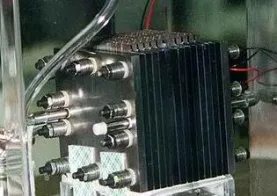
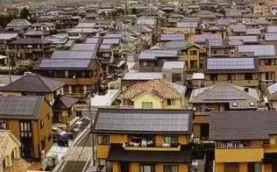
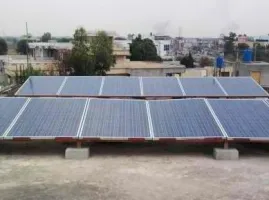
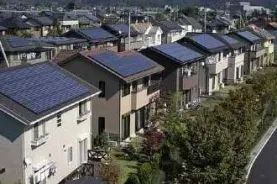
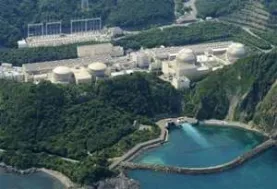
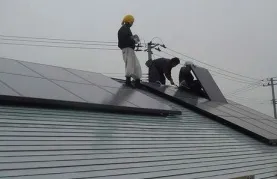

 Advertise
Advertise














